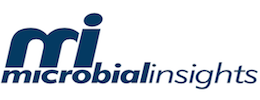Microbial source tracking (MST) uses molecular biological tools, such as Census®, to identify fecal pollution sources including humans, dogs, cattle, and wildlife that stem from sewer leaks, septic system failures, stormwater runoff, and agricultural runoff. CENSUS® qPCR (quantitative polymerase chain reaction) is a DNA based method to accurately quantify target genetic markers associated with the fecal material from these specific origins/hosts.

CENSUS qPCR MST ADVANTAGES:

DIAGNOSTIC
Microbial source tracking (MST) uses molecular biological tools to identify fecal pollution sources including humans, dogs, cattle, and wildlife that stem from sewer leaks, septic system failures, stormwater runoff, and agricultural runoff. CENSUS®qPCR (quantitative polymerase chain reaction) is a DNA based method to accurately quantify target genetic markers associated with the fecal material from these specific origins/hosts.

SOURCE IDENTIFICATION
If the source of fecal contamination is unknown, how can the problem be fixed? CENSUS®qPCR assays for microbial source tracking are used to identify the fecal pollution source (e.g., humans, cattle, dogs, geese, etc.).

QUANTITATIVE
Absolute quantification of the concentrations of source specific markers allows water resource managers to analyze trends over time and evaluate the effectiveness of implemented control measures such as sewer rehab, “stoop and scoop” policies, and buffer zones. Results reported as cells/mL, cells/g, etc.

SENSITIVE
Practical Detection Limits (PDL) are as low as 100 cells per sample with a dynamic range over seven orders of magnitude.

SPECIFIC
Target specific fecal pollution sources including humans, dogs, ruminants (e.g., cattle), seagulls, and Canada geese.

COST EFFECTIVE
Fast turnaround time (7-10 days), with rush service available, so you can make decisions and take action quickly. CENSUS®qPCR for MS ultimately saves money because source identification allows selection of the most appropriate corrective measures and therefore more effective use of resources to improve water quality.

FLEXIBLE
Analysis can be performed on almost any type of sample (water, sediments, soil, Bio-Traps® and others).
HOW TO USE CENSUS® qPCR FOR MST:
Along with a sanitary survey of the watershed, use MST to identify sources of fecal pollution in surface waters and evaluate the effectiveness of control measures.
Use CENSUS® qPCR MST to help answer…
- What is the source of fecal pollution?
- Could it be human fecal material from failing septic systems?
- Could seagulls be a major source of fecal contamination at the beach?
- Are dogs contributing to fecal pollution? Have “stoop and scoop” signs helped?

RESOURCES
AVAILABLE CENSUS® qPCR ASSAYS TO HELP WITH MIC, SOURING AND MITIGATION
| TARGET | MI CODE | RELEVANCE / DATA INTERPRETATION |
|---|---|---|
| General Bacteroides | GenBAC | One of the prominent bacterial groups inhabiting the intestinal tracts of warm blooded animals including humans, cattle, swine, horses, and dogs. Quantification of total Bacteroides provides a general indicator of fecal contamination. |
| Total Enterococcus | TENT | Enterococci, a subset of fecal streptococci, are found in the feces of all warm blooded animals and are believed to have higher survival rates in water than fecal coliforms. As with total Bacteroides, the total Enterococcus assay provides a general indicator of fecal contamination. |
| Total E. Coli | TECOLI | The total E. coli assay also provides a general indicator of fecal contamination. |
| Human Bacteroides | HF183 | Quantification of genetic markers of fecal Bacteroides from humans. |
| Ruminant Bacteria | BacR, Rum2Bac | Quantification of two genetic markers of fecal Bacteroides from a variety of grazing animals. |
| Canada Goose Bacteroides | CGBACT-1,2 | Quantification of two genetic markers of fecal Bacteroides from Canada Geese. |
| Dog Bacteroides | DBACT | Quantification of a genetic marker of fecal Bacteroides from dogs. |
| Seagull Catellicoccus | GULL-CAT | Quantification of a genetic marker of Catellicoccus marimammalium shown to be an indicator of gull fecal contamination. |
